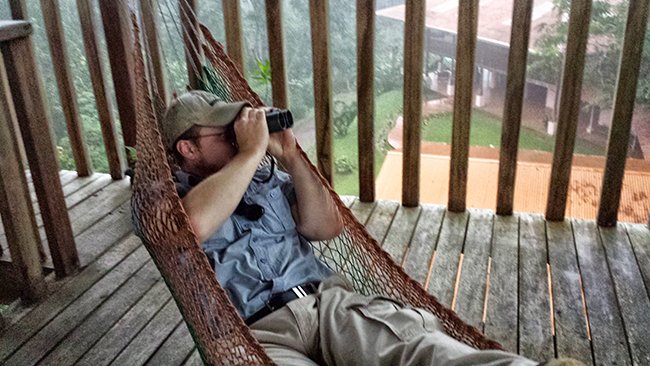
When the proprietors of Costa Rica’s Finca Luna Nueva Lodge graciously invited Corey and me to visit, we were both thrilled at the prospect of awesome Costa Rican birds at an amazing ecolodge. But the prospects of our trip grew even more exciting once we learned that our stay would coincide with the Conteo de Aves Arenal 2014 or 2014 Arenal Bird Count. Best of all, we’d be part of the count team at Finca Luna Nueva.
Anyone attuned to Neotropical birding knows well that the Arenal area is famous for phenomenal birding, perhaps among the best in the world. Costa Rican birders are clearly up to the task, because the Annual Arenal Bird Count stood out as one of the best organized and attended bird counts I’ve ever seen. Then again, considering that the count list included more than 500 potential species, any effort to track down as many as possible for a single-day snapshot of avian diversity demands massive commitment, focus, and energy. And umbrellas too… early December in Costa Rica’s Caribbean lowlands is very, very wet.
The festivities kicked off with a pre-count presentation led by organizers Diego and Juan Diego. I don’t know how popular bird counts are in your neck of the world, but I was shocked to see that this group of well over 60 birders filled a gymnasium. Apparently, most of the Costa Rican birderati were in attendance, including Richard Rodriguez and Robert Dean, author and illustrator respectively of the outstanding Birds of Costa Rica: A Field Guide (the 2nd edition of which just came out!) In fact, so many people volunteered for the count that some were turned away.
Juan Diego treated the large, mostly young crowd to a fascinating discussion of uncommon morphs in birds, featuring the rare Rufous morph of the Great Currasow that served as the totem for this year’s count. He and Diego then described each of the eight count circles, sharing detailed maps, distances, and target species while introducing the participants. Our count would be lead by Ismael Torres, who served as our guide to the avian splendors of Finca Luna Nueva. We’d also be joined by two Costa Rican birders we didn’t know, Johan Weintz Aguilar and Tomohide Cho. Our ace in the hole was a birder well known to readers of 10,000 Birds: Patrick O’Donnell. Pat (who wrote about the count as well) understands the distribution and behavior of the birds of Costa Rica (and pretty much anywhere else you might think of) so well, I couldn’t help but imagine hundreds of species falling out of the trees to appear on our count list. That might even have happened, were it not for the rain.
As I said, early December in this area of very humid rainforest is extensively, almost unbearably rainy. Unfortunately, the count cannot be held later nor counted as an official Christmas Bird Count even though protocol is mostly the same because mid-December ushers in the high season of Costa Rican tourism. Basically, everyone gets way too busy for bird counting by the time the rain abates. The only alternative is to bite the bullet and count birds in the rain.
So we did. Sure, torrential precipitation rendered our 4:30am attempts at owls futile, but every time rain gave way to mist, birds flew from cover with gusto. The first time this happened, we were perched high and dry in Finca Luna Nueva’s canopy tower. Many expected species presented themselves after dawn, as did a few unexpected species including an utterly incongruous Magnificent Frigatebird, the only record of the entire count.
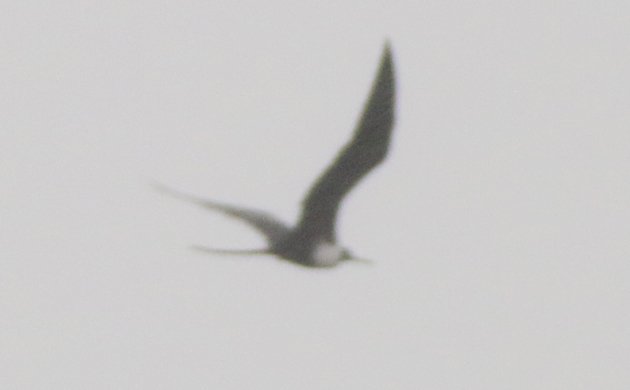
From the tower, we moved to the property’s open agricultural fields. Ismael, Corey, and I scouted these areas the previous day and turned up lots of great species. Some of them, like a rare-to-Costa Rica Nashville Warbler, failed to appear again, but we ticked off a ton of other Neotropical migrants including my life Mourning Warbler!
Mid-morning meant that we needed to turn our attention to deep forest species. We hit the lodge’s Cabalonga Trail, where we were almost immediately greeted by Great Currasows, the spiritual icons of the count. No rufous morphs though. Still, despite the rain, many great forest specialists appeared along this awesome trail like the elusive Carmiol’s Tanager. We also found one of our designated targets, a rare bird I dearly longed to see, White-fronted Nunbird. What a treat!
A tremendous benefit of counting birds on the premises of a high-end ecolodge is that you can expect an excellent lunch. Some of the group took their repast as Pat and I returned to the tower. Just as we were discussing how criminally quiet the resident trogons and motmots had been, a gorgeous Keel-billed Motmot assumed an uncharacteristic place on a high, open branch, where it would return again and again for at least 30 minutes. Every count day tends to include these moments of serendipity.
Then again, every count also includes those almost-automatic species that somehow fail to turn up when you need them. We missed more than a couple of clutch birds, but the one that stung the most was Gray-necked Wood-Rail. This species openly and notoriously basks in the attention of Finca Luna Nueva’s guests nearly every day. Yet, they eschewed the spotlight for a chance, which was disastrous considering that nobody else counted that species for the day.
After we pulled as much as we could from Finca Luna Nueva’s rain-drenched woods, we moved to higher elevations. The University of Texas A&M owns a research facility called the Soltis Center on a fabulous patch of primary forest. None of our group had birded the area before, so we drooled over the prospects of forest species much more likely at 800 meters than Finca Luna Nueva’s average 220m. Lo and behold, the Soltis Center delivered crackers like White-throated Shrike-Tanager, Black-and-yellow Tanager, Streak-crowned Antvireo, and Song Wren. Unfortunately, yet more wicked rain prevented us from experiencing the full force of this location’s promise.
That happened to be the story not just of our day but of everyone else’s. At the count dinner, we heard as much about the misses as the hits, about how hard the birding was. And yet our large alliance of avid avian observers turned up way more birds than most CBCs will this year or any other. When every tick was tallied, the total for the 2nd Annual Arenal Bird Count stood at 332, a shade lower than last year’s but still stellar in terms of the sheer number of species. Many common birds were unfortunately missed, but so many of the species birders dream of showed up in spite of the inclement conditions.
Our own count was what I hope was a respectable 132 species. Pat, master that he is, helped make the most of a challenging environment, but he was not alone. Ismael’s deep knowledge of Finca Luna Nueva and its avifauna ensured that we put ourselves in the right places at the right times. Tomo was a careful and accurate observer, and Johan, a professional bird guide himself, seemed to spot many species the rest of us missed. Hopefully. Corey and I held our own. We certainly enjoyed ourselves during an unforgettable survey of a sweet slice of Caribbean lowlands. I also learned a lot about how dedicated and organized Costa Rica’s birding community is and can’t express how impressed the entire group was. The Arenal Bird Count was a count among counts, a true depiction not only of how amazing Costa Rican bird diversity is but also of how powerful and enjoyable participating in citizen science projects like bird counts can be. You may not ever be lucky enough to participate in this count, but you can surely do you best to make your local count more like it. And then maybe you’ll turn up a Keel-billed Motmot!
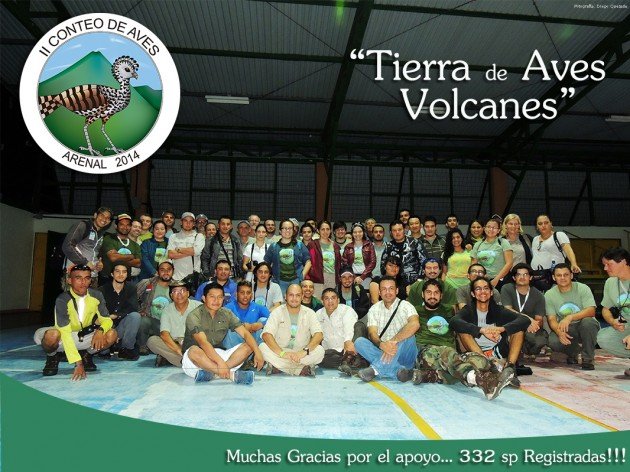
POSTSCRIPT: While most of us had never heard of the rufous morph of the Great Currasow before, we all did our best to find one of these unicorns during the count. Of course none appeared. But wouldn’t you know it, just one day later at Arenal Observatory Lodge, Corey, Pat, and I struck gold. They do exist!


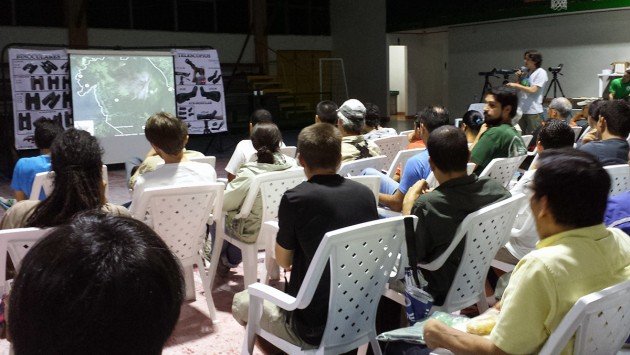

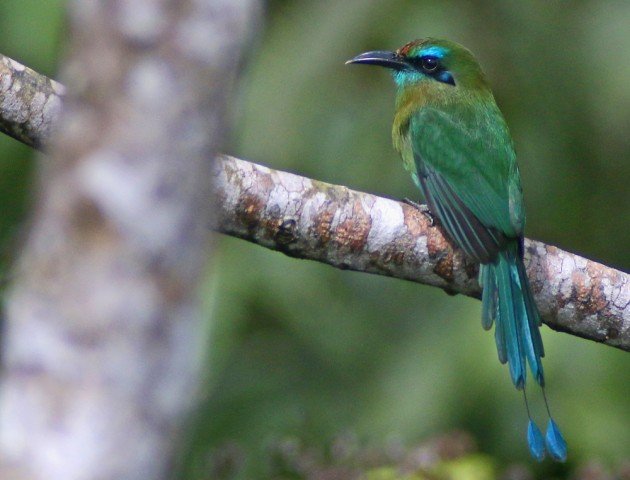

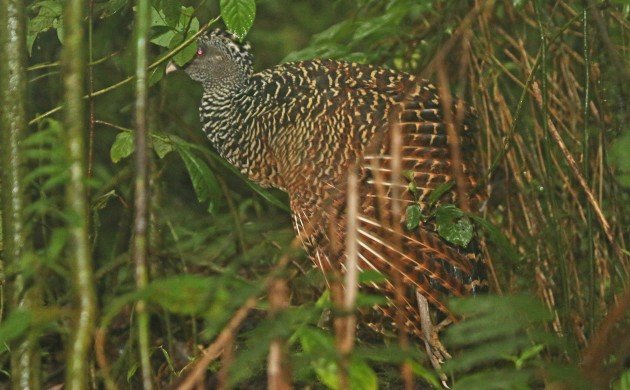











Thanks for the great articule Mike, it sure was a pleasure to have you, Corey and Pat with us… Needless to say that you are more than welcome for next year’s Annual Bird Count in Arenal.
Diego Q.
Amazing tale! However, I can’t quite believe that you reside at the Great Lakes, yet had to travel to CR to see your life Mourning Warbler.
Were it not for its already occupying position No 1 on my “must visit list”, CR would have moved several places up due to this post.
Fun, memorable count. Hard to pick a best bird. Frigatebird was the most unexpected but hard to pick between the nunbird, motmot, Song Wren, shrike-tanager, and curassow.